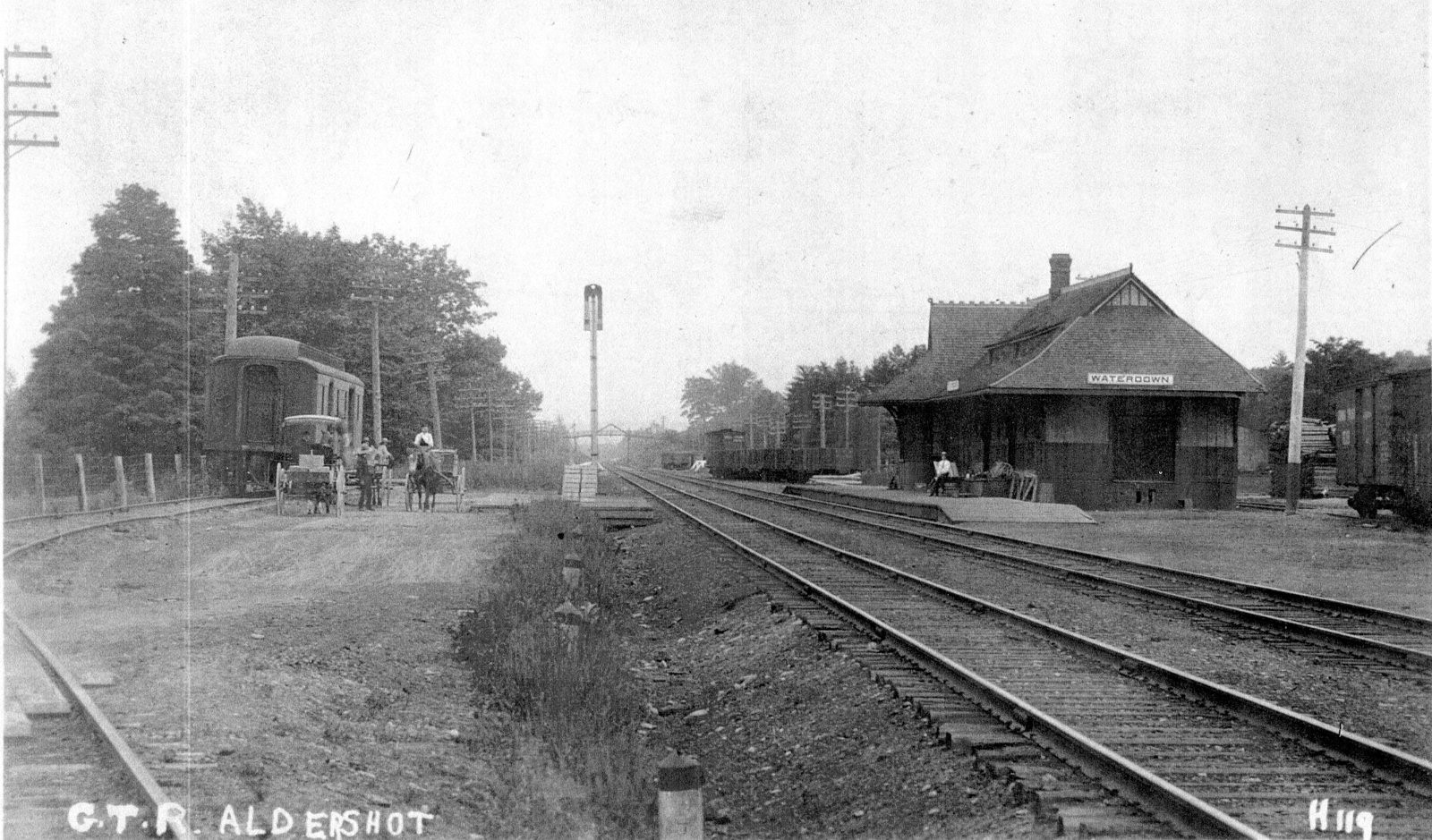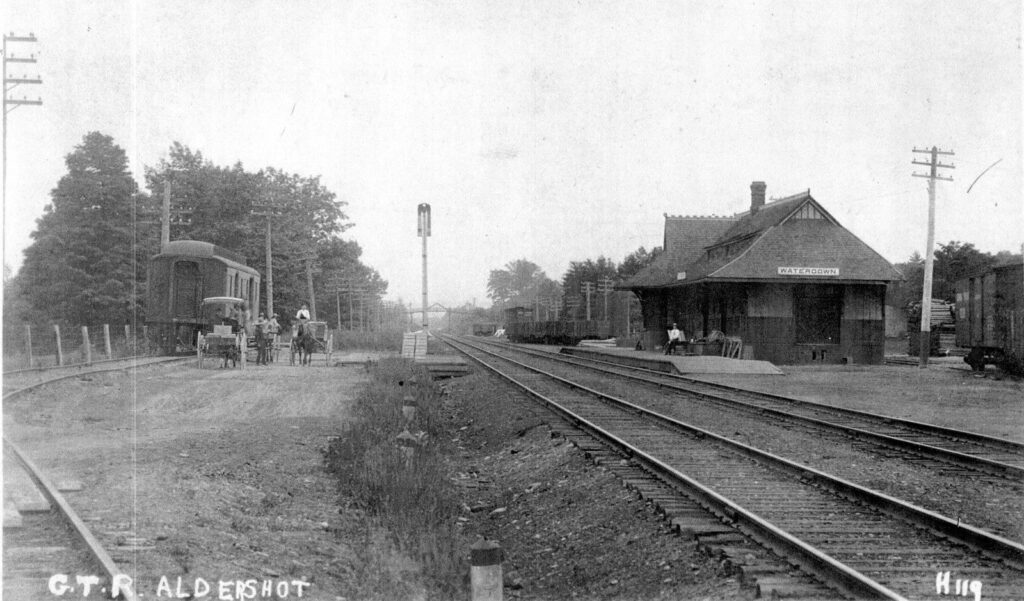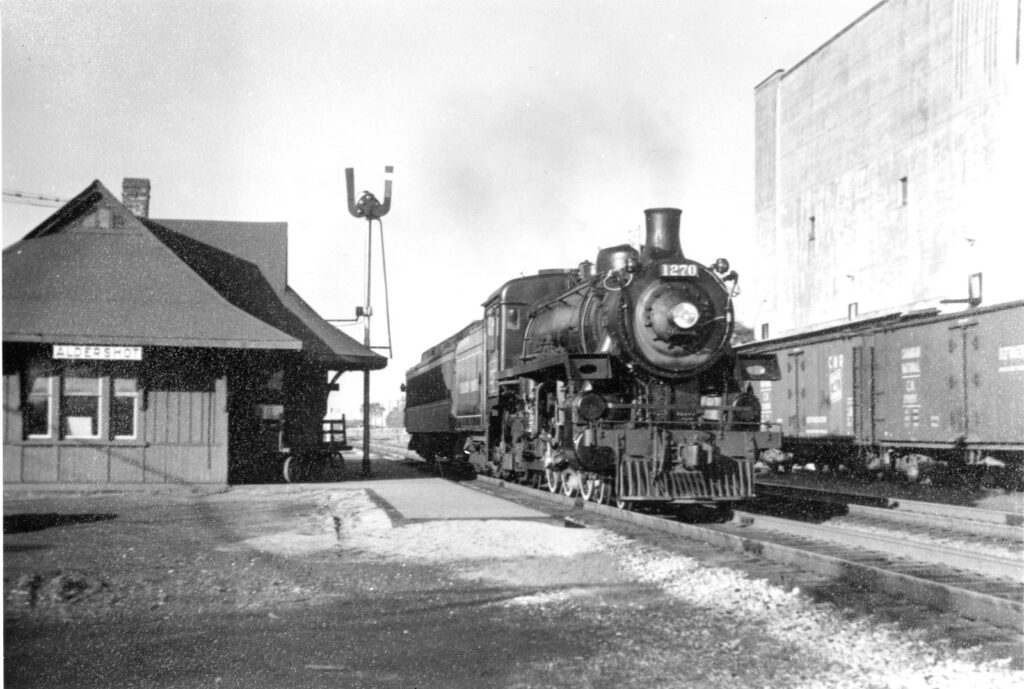Summary
The first train station in Aldershot was built by the Great Western Railway in 1855 while construction of their Toronto Branch was progressing eastward. Originally called Waterdown, the station was named as such for its location on the west side of Waterdown Road. While no photos are known to exist of this station, it was a small wood frame structure identical to others built elsewhere by the Great Western around the same time. The first train arrived at Waterdown Station later the same year, and by 1861 a total of six passenger trains stopped there on a daily basis. The Great Western Railway began double-tracking the segment between Toronto and Hamilton in 1878 to allow for a higher volume of trains, but it would not be completed until many years later in 1896. By this point the line through Oakville was owned and operated by the Grand Trunk Railway, who gained control of the Great Western in 1882. Train service to Waterdown Station had increased to 13 trains per day by 1886.
A new Waterdown Station was constructed by the Grand Trunk shortly after efforts on double tracking had wrapped up. It was a rectangular structure with board-and-batten exterior walls and a dutch roof. A gable was located above the operator’s bay, which provided visibility from the station agent’s office. Soon afterward, the Canadian Pacific Railway would gain trackage rights over the Grand Trunk from Hamilton to Toronto. These trains would use a combination of equipment from Canadian Pacific, Toronto, Hamilton & Buffalo, and the New York Central Railroad, but they were piloted by Canadian Pacific crews over this section. Service by Canadian Pacific through Waterdown Station began on May 30th, 1897, but their trains would ultimately bypass it altogether. The station was renamed to Aldershot in 1912, as its distance of three kilometers outside of Waterdown proper may have led to some confusion. The Grand Trunk would begin to encounter financial difficulties soon afterward, culminating in its nationalization and subsequent merger into Canadian National in 1923. While service to other stations on the former Toronto Branch had increased tremendously by 1941, service to Aldershot had decreased to just four departures per day during the same timespan. However, after an increase in ridership following World War Two and the suburbanization of Aldershot around the same time, the station saw a brief rebound in service to 27 trains per day by 1957.
The popularization of automobiles in the early 20th century resulted in a decline in passenger ridership, which was exacerbated by the completion of the Queen Elizabeth Way through Aldershot in the 1960’s. The highway was built a mere 150 metres north of Aldershot Station, running parallel with the railway for much of its length and directly serving many of the same communities. Service had dropped to four trains per day by 1960, ending altogether by the end of the decade. The station sat abandoned for a time until it was dismantled in 1978, motivating the successful preservation of another station in neighbouring Burlington several years later. After two decades without direct access to passenger rail, the Aldershot GO Station was built on the east side of Waterdown Road in 1992. In addition to GO Transit, this station is also served by VIA Rail and Amtrak.
Condensed Station Info:
| Location: | Served By: | Current State: | Date Built: | Date Demolished: |
| Waterdown Road | GWR (1855 – 1882) GTR (1882 – 1923) CNR (1923 – 1970) | Demolished | 1855 (First) 1896 (Second) | 1896 (First) 1978 (Second) |




